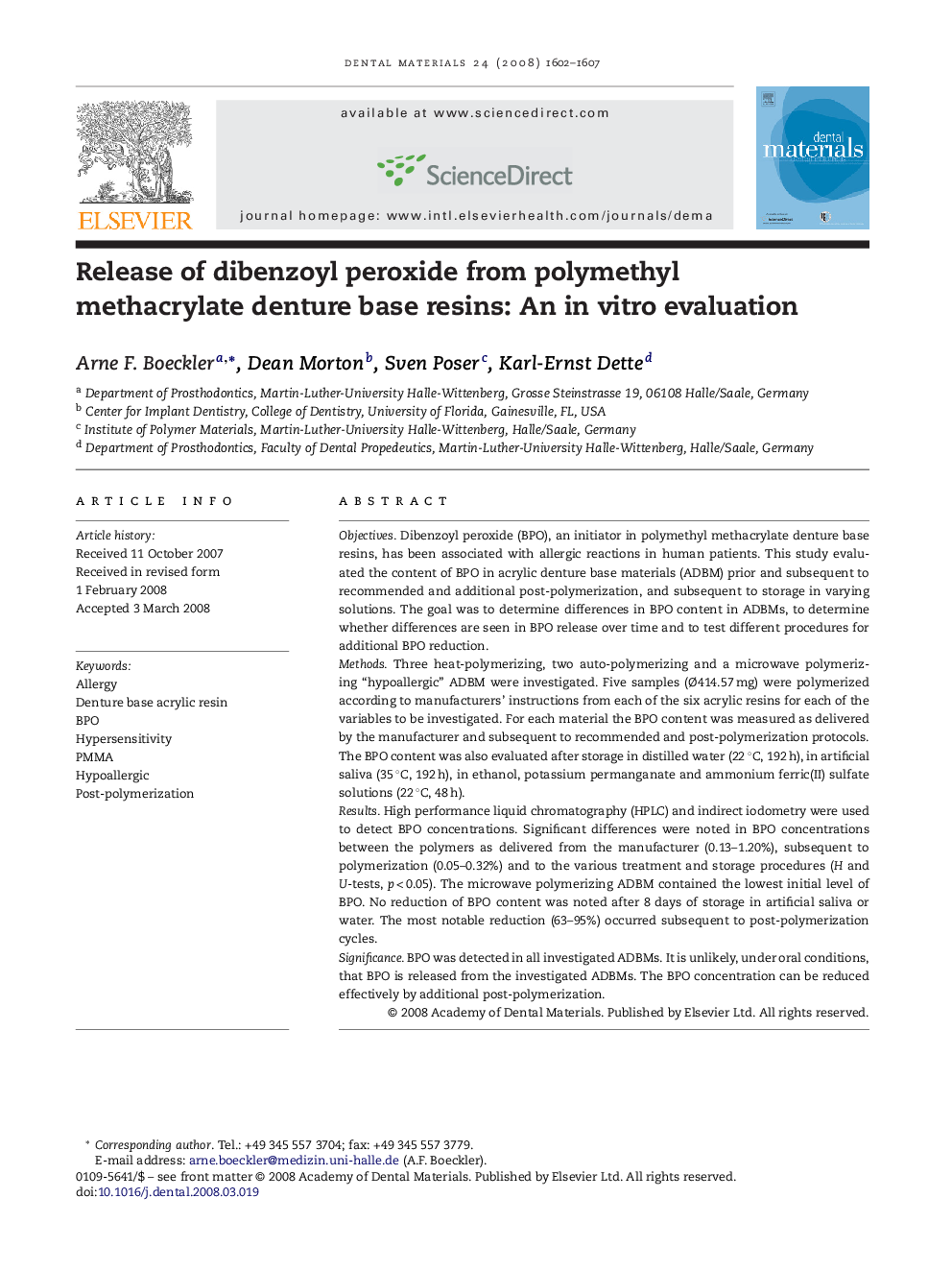| کد مقاله | کد نشریه | سال انتشار | مقاله انگلیسی | نسخه تمام متن |
|---|---|---|---|---|
| 1422908 | 986465 | 2008 | 6 صفحه PDF | دانلود رایگان |

ObjectivesDibenzoyl peroxide (BPO), an initiator in polymethyl methacrylate denture base resins, has been associated with allergic reactions in human patients. This study evaluated the content of BPO in acrylic denture base materials (ADBM) prior and subsequent to recommended and additional post-polymerization, and subsequent to storage in varying solutions. The goal was to determine differences in BPO content in ADBMs, to determine whether differences are seen in BPO release over time and to test different procedures for additional BPO reduction.MethodsThree heat-polymerizing, two auto-polymerizing and a microwave polymerizing “hypoallergic” ADBM were investigated. Five samples (Ø414.57 mg) were polymerized according to manufacturers’ instructions from each of the six acrylic resins for each of the variables to be investigated. For each material the BPO content was measured as delivered by the manufacturer and subsequent to recommended and post-polymerization protocols. The BPO content was also evaluated after storage in distilled water (22 °C, 192 h), in artificial saliva (35 °C, 192 h), in ethanol, potassium permanganate and ammonium ferric(II) sulfate solutions (22 °C, 48 h).ResultsHigh performance liquid chromatography (HPLC) and indirect iodometry were used to detect BPO concentrations. Significant differences were noted in BPO concentrations between the polymers as delivered from the manufacturer (0.13–1.20%), subsequent to polymerization (0.05–0.32%) and to the various treatment and storage procedures (H and U-tests, p < 0.05). The microwave polymerizing ADBM contained the lowest initial level of BPO. No reduction of BPO content was noted after 8 days of storage in artificial saliva or water. The most notable reduction (63–95%) occurred subsequent to post-polymerization cycles.SignificanceBPO was detected in all investigated ADBMs. It is unlikely, under oral conditions, that BPO is released from the investigated ADBMs. The BPO concentration can be reduced effectively by additional post-polymerization.
Journal: Dental Materials - Volume 24, Issue 12, December 2008, Pages 1602–1607